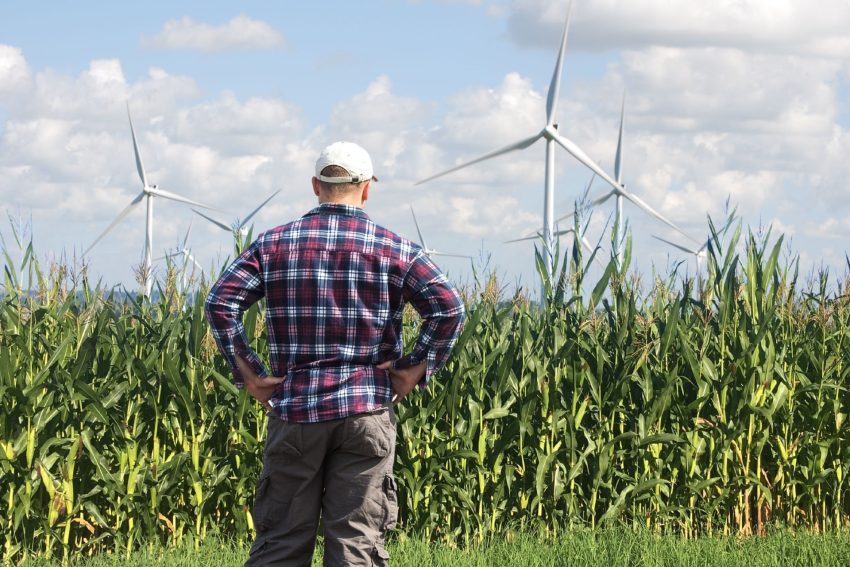In recent years, the term “wind theft” has surged into the spotlight, raising eyebrows and concerns, particularly among farmers in rural areas surrounded by wind farms. As highlighted in a recent BBC Future article, “wind theft” describes how wind turbines, designed to capture wind for renewable energy, can disrupt natural airflow, potentially depriving neighboring properties of the wind they depend on. For farmers, this isn’t just a theoretical issue—it’s a direct threat to their crops, local weather patterns, and livelihoods. As “wind theft” garners attention, it’s time to raise the alarm about the unintended consequences of “green” technologies and question whether profiting from stolen wind should be legal.
Understanding “Wind Theft”
Wind turbines generate electricity by harnessing kinetic energy from the wind, slowing it down as it passes through their towering blades. This creates a “wake effect,” where wind speed is significantly reduced downwind of the turbine, sometimes for several miles. According to the BBC, studies suggest that large wind farms can alter local wind patterns, reducing airflow to neighboring lands. For farmers whose fields lie in the shadow of these turbines, this reduction in wind can have serious implications.
While high winds can damage crops by causing lodging (when plants bend or break) or excessive drying, moderate wind is essential for healthy agricultural ecosystems. Wind aids in pollination and regulates temperature and humidity around crops. A lack of natural airflow can disrupt these processes, potentially leading to lower yields and altered microclimates. For example, reduced wind can increase humidity, fostering mold or fungal growth, or trap heat, stressing plants. These changes, subtle at first, can compound over time, disrupting a farm’s operations and profitability.
Why Farmers Should Be Alarmed
Farmers are rarely informed about the downstream effects of wind farms when turbines are installed nearby. The BBC article notes that while wind energy is celebrated as a cornerstone of the fight against climate change, its local impacts are often downplayed or overlooked. For farmers, the consequences of “wind theft” can be profound:
Altered Weather Patterns: Wind turbines can influence local meteorology by reducing wind speeds and mixing air less effectively. This can lead to changes in temperature, humidity, and precipitation patterns, all of which are critical for crop growth. For instance, a lack of wind may cause stagnant air, increasing the risk of frost in cooler months or heat stress in warmer ones.
Reduced Crop Yields: Crops like wheat, corn, and fruit trees rely on wind for pollination. A reduction in natural wind could lower pollination rates, particularly for plants that depend on wind-driven pollen transfer, leading to smaller harvests and financial losses.
Economic Disparity: While wind farm operators profit by selling the energy generated from captured wind, neighboring farmers bear the cost of disrupted airflow without compensation. This inequity has fueled calls for “wind theft” to be recognized as a form of resource appropriation, akin to diverting water from a shared stream.
The Hidden Costs of “Green” Technology
The push for renewable energy is often framed as an environmental necessity, but the consequences of technologies like wind turbines are rarely discussed in mainstream narratives. As the BBC article points out, the wake effects of wind farms can extend far beyond their immediate vicinity, impacting entire regions. Yet, farmers are often left out of the conversation when wind projects are approved, despite being among the most affected.
This lack of transparency raises ethical questions. Should companies be allowed to “steal” wind—a natural resource that belongs to no one—and profit from it while neighboring farmers suffer? The idea of wind as a shared resource is gaining traction, with some advocating for legal protections to prevent its unilateral appropriation. In much the same way that water rights are regulated to prevent upstream users from depriving those downstream, wind rights could be established to ensure fair access to natural airflow.
A Call for Action
The rise of “wind theft” in the news should serve as a wake-up call for farmers and policymakers alike. To protect agricultural communities, several steps are urgently needed:
Legislation to Protect Wind Rights: Lawmakers should consider regulations that recognize wind as a shared resource, prohibiting wind farms from significantly altering airflow to neighboring properties without consent or compensation. Profiting from “stolen” wind should be scrutinized under property rights laws.
Impact Assessments: Before wind farms are approved, comprehensive environmental impact studies should evaluate their effects on local wind patterns and agriculture. Farmers must be included in these discussions to ensure their concerns are addressed.
Compensation for Affected Farmers: If wind farms are found to disrupt airflow and harm crops, operators should be required to compensate affected farmers for their losses, similar to how eminent domain compensates landowners for taken property. There should also be discussion of dismantling turbines that are affecting agriculture, which is far more important than politically-motivated “green” energy.
Public Awareness: The media and advocacy groups should amplify the voices of farmers impacted by “wind theft,” shedding light on the hidden costs of renewable energy and pushing for equitable solutions.
Conclusion
“Wind theft” may sound like a niche issue, but for farmers surrounded by wind turbines, it’s a pressing reality that threatens their way of life. As the BBC Future article underscores, the wake effects of wind farms can disrupt local wind patterns, with cascading consequences for agriculture. While wind energy seems like “free” energy (that costs a lot to construct and maintain), in reality, it comes at a significant cost to those living in the vicinity of these massive turbines. It’s time to recognize wind as a shared resource and ensure that “green” technologies don’t leave farmers out in the cold.


